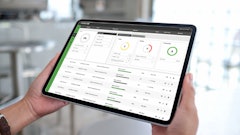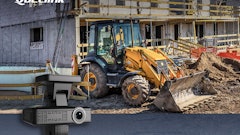
Being a contractor in Tornado Alley might sound like a great business strategy, but when thousands of homes over hundreds of square miles all need extensive repairs at the same time, you need more than hammers to keep up with demand.
The team at Missouri-based Aspen Contracting realized this after two consecutive record years of severe weather. The sheer number of projects that the company tackled caused paperwork pitfalls and logistics nightmares that demanded attention if Aspen was going to maintain its reputation and rate of growth.
A Growing Need
Since shortly after its founding in 2006, Aspen has always ranked among the nation’s largest residential roofing contractors. It’s experienced exponential growth—ranking sixth among the nation’s roofers in 2008 and then catapulting to fourth in 2011, when it achieved a gross revenue of $100 million. In the same year, peak staffing at Aspen jumped from 370 to 550.
While the company adopted many technologies to give it a competitive advantage—including the latest weather forecasting services—business was at the mercy of the elements when it came to the inevitable crush of hiring, purchasing and payment paperwork accompanying its workload.
After just two years in business, Aspen’s inventory of four-drawer file cabinets was full of job documents from all around the country. As the company grew, so did the need for file cabinets. At the same time, the company incurred out-of-budget cost increases for document shipping. This was largely due to the increase of payroll and customer deposits from each of the regional offices and the need to ship the documentation to office headquarters in Lee’s Summit, Missouri.
A large part of Aspen’s business strategy focuses on deploying quality employees and materials to severe weather-impacted locations as quickly as possible. With this growing paper problem, maintaining the speed and service that Aspen was known for was growing increasingly difficult.
Less Paper Means Less Work
Aspen found a solution when the company purchased a records management system developed by Laserfiche. All paper records were scanned into electronic documents, allowing them to be uploaded, viewed and exported from the regional offices to headquarters. This eliminated the need to use and purchase additional filing cabinets.
The transition from paper to digital records allowed the company to dramatically improve the speed and reliability of its records distribution demands. So much so, that the system was dubbed “The Quick Fed-Ex” and was quickly saving the company tens of thousands of dollars in document shipping costs.
In addition to the shipping and storage space savings, Aspen can now easily create digital backup files in case of natural disaster. The electronic storage of those files also made information much easier to find for day-to-day needs. “All items also became easily accessible to everyone in our field offices,” says Laura Guengerich, field system specialist at Aspen Contracting. “No one had to go dig in a file cabinet to email or ship documents to folks in the field.”
However, as the company continued to grow, so did its need to streamline other back-office practices and improve efficiencies in areas beyond records management. So, Guengerich was tasked with finding a way to keep operations apace with the hundreds of employees and millions of dollars in materials that Aspen manages in any given month.
High-Tech Solutions to HR Challenges
Guengerich knew that Laserfiche had drastically improved the company’s records management, so she called the reseller that installed the system, Kansas-based R&D Computer Systems. The reseller recommended expanding the existing Laserfiche system to the company’s Avante product which offer a broader range of enterprise content management (ECM) functionality, including electronic forms , and electronic workflow.
“Avante is SaaS (software as a service) that uses software to leverage electronic images into a whole new way of working with company records,” says R&D Computer Systems President Richard McGinnis. “Over the past few years, this technology has gone from prototype to proven. It no longer just uses electronic images as a virtual filing cabinet; it converts the computer records repository into a virtual office. It’s a whole new way of doing business.”
Laserfiche’s business process automation, electronic forms and mobile functionality were first deployed to standardize and streamline Aspen’s back-office operations in the Lee Summit headquarters as well as its 34 offices in 48 states.
For example, in human resources, 82 pages of manuals, forms and other documentation are involved with orienting a new employee. The company deals with 20 or more changes to existing employee personnel files every day. Aspen re-engineered the process using electronic forms so now, all new-hire paperwork is completed on computers, no more pens and paper forms.
The electronic workflow modules digitally capture employee information after it is entered in electronic forms and populate all necessary forms that follow, eliminating redundant manual data entry and reducing errors. Once the forms are complete, the electronic workflow module automatically creates a PDF that requires a physical signature. This PDF is emailed to the appropriate field office. Automated emails containing the manuals and employment agreements are sent to the new hire in PDF format.
As a result, the packet required to be printed and scanned is reduced from 82 pages to eight pages. Preparing the new hire packet has been cut down from a lengthy 1.5-hour process with five different people involved, to a 15-minute process. For a company that can have as many as 20 new hires in a day, it’s a big plus to shorten the time to hire. Before implementing electronic forms, the process took three to four days from beginning to end; now, the company can have the forms completed by the end of a day.
The expansion just about doubled Aspen’s license and technical support costs, McGinnis says. But compared to the savings realized, it’s well worth the expense. The upfront cost of such systems varies depending on the size and any training that may be required, and those invoice figures are closely guarded in the highly competitive world of records management system sales.
However, McGinnis said the start-up costs of Aspen’s Avante system were well under six-figures and Guengerich expects the savings will produce a ROI in less than two years and that savings is expected to grow considerably.
After orientation, new employees are ready to work. “No more copying, scanning, faxing; no more emailing,” Guengerich says. “It electronically streamlines so much of what were once manual tasks and the best part is, we can do these tasks using mobile devices.” Where the company had four staff dedicated to scanning documents into and maintaining the old records system, those positions have been eliminated through electronic forms and workflow with the remaining maintenance requirements for the Avante system being folded into the daily routine of general office staff.
“Over the long run this system is going to save us millions of dollars,” Guengerich says. “Just the elimination of the staff positions is saving Aspen hundreds of thousands a year.” Benefit enrollment has also been streamlined. Laserfiche automatically sends information packets to the new enrollee, where the employee is able to enroll in new benefits packages via electronic forms on a company-issued iPad. The forms are populated from a database, completed by the enrollees, stored in the document repository and then sent to the benefit administrators for processing.
Reducing Errors, Sleeping Better
Another automated process was created for customer job deposits to increase both accuracy and efficiency. The field office can now fill out a form in Laserfiche, which integrates with Aspen Contracting’s CRM system. Once the deposit is input into the system, Laserfiche automatically sends it to accounting to process and updates the customer’s account.
“Without ECM, something as simple as a deposit could require someone entering information into five different systems,” Guengerich says. But with ECM, information only needs to be entered once for the data to be used across all systems. This results in more accurate documents and reports. “Previously, three full-time employee resources were used for invoicing; now, only one resource is responsible for invoicing, which allows for the other two resources be moved to more strategic roles, saving the company countless man-hours per year.”
Elsewhere in back-office operations, evidence abounds of smaller savings adding up to annual benefits that will eclipse the company’s ECM investment in a year or two, including some that are a little harder to count in dollars and cents.
“The folks facing severe weather are not the only ones losing sleep when the havoc hits,” Guengerich says. “If I know that I have tons of paperwork facing me, I don’t sleep much either. But I’m doing better these days.”
Tim Wacker, technical writer for research and writing services company NBN Communications, prepared this story for Laserfiche Enterprise Content Management. He can be reached at [email protected].


















